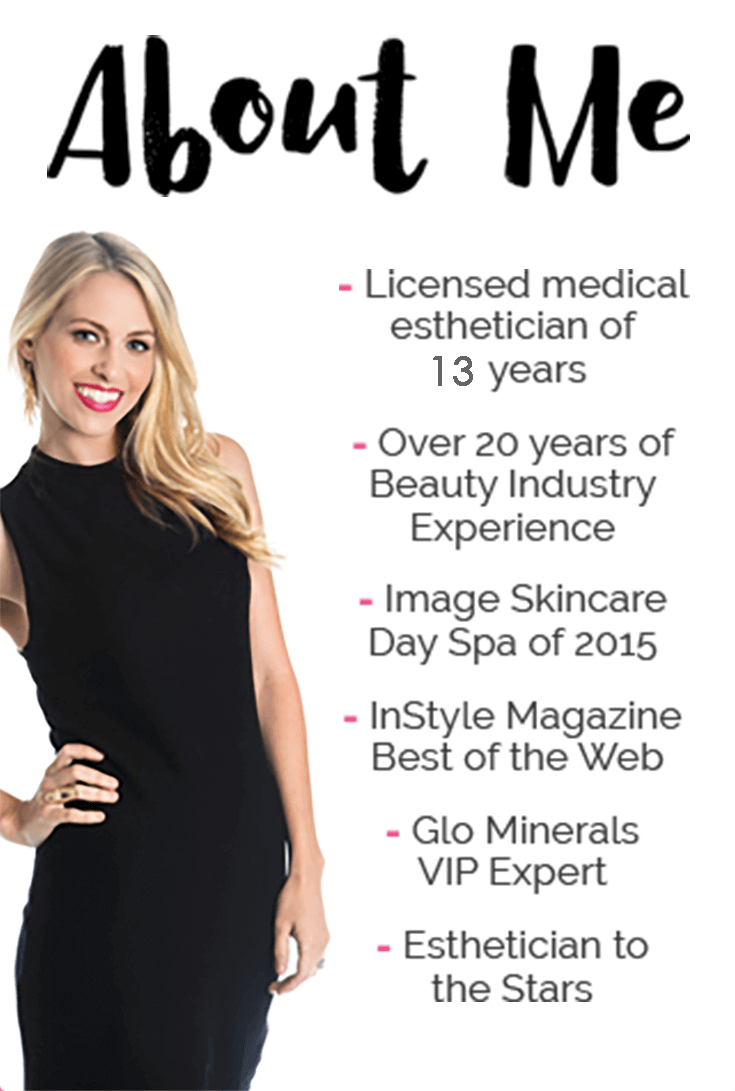What Should You Be Using In Your Skin Care Routine?
Take my quiz and get personalized recommendations from a
licensed esthetician!
So What Do These Beauty Terms Actually Mean? Analyzing This Year’s New And Popular Procedures
From bold brows to smooth skin, 2017 is all about the new beauty terminology.
If you’re interested in learning more about non-invasive procedures for your skin and overall look, then you’ve come to the right place.
Learning new terms and techniques can be overwhelming, so let’s board this beauty train together!

What Is Microneedling?
Answer: Microneedling is a process that involves using needles to puncture hundreds of tiny holes in the skin.
It may seem like the newest trend in beauty skincare, but this process (and its variations) has been around for over 50 years.
It’s also referred to as Collagen Induction Therapy (CIT), and it consists of using either a dermapen or dermaroller.
The dermapen has tiny needles at the end that make little holes or needle pricks in the top layers of skin.
The dermaroller looks like a miniature paint roller with lots of tiny needles that is gently rolled in different directions over the surface of the skin to achieve the same effect.
Microneedling can improve the appearance of:
- Wrinkles
- Hyperpigmentation
- Dull skin
- Scars
- Stretch Marks
- Cellulite
In a 2009 study, 37 patients underwent microneedling procedures to treat atrophic facial scars (those sunken scars that result from acne, chicken pox, etc.).
How The Microneedling Procedure Works
- First, a dermatologist applies a numbing cream to the patient’s skin.
- Next, the practitioner will either gently roll a dermaroller over the surface of the skin in a few different directions, or use a dermapen to work around areas of the face to create tiny holes in the skin’s surface.
- The whole process takes around 20-30 minutes. While it involves needles in your face (a thought that would normally elicit a full body shudder), the process is apparently pretty painless.
You can expect some redness for up to a couple days afterward as a result of all the skin stimulation.
However, it subsides quickly as the healing begins and the results of more glowing, supple skin start to show.
To get truly effective results, you’ll need more than one treatment to continually build collagen and elastin.

What Is Microblading?
Answer: If you haven’t been living under a rock these past few years, you’ve probably noticed that natural-looking, fuller brows are in and it looks like they’ll be here to stay for awhile.
According to a study by the market research group NPD, eyebrow makeup sales jumped 34% in just one year in 2014.
Unfortunately, not everyone’s natural brows are bold and lush.
This is why brow kits and brow mascara are incredibly popular right now - they help those with sparse brows achieve a glamorous, fuller, more youthful look.
A more permanent option to enhance your brows is microblading.
Basically, microblading is a type of tattoo process, or “eyebrow embroidery,” for natural-looking, semi-permanent arches.
It’s a great option to reconstruct missing brows or fill in/reshape existing ones.
Results last for 9-18 months on average.
Microblading is typically done by a cosmetic tattoo expert at a plastic surgeon or dermatologist’s office.
Microblading tattoo artists must go through training on angling, eyebrow shaping, achieving the proper strokes, pressure, and color theory.
How The Microblading Procedure Works:
- A numbing cream is applied to the eyebrow area.
- The specialist uses a small tool equipped with tiny blades or needles which are dipped into pigment and then deposited into the top layers of skin in strokes.
- These strokes are meant to resemble the natural, fine hairs of full eyebrows.
- It typically takes about two hours, and the pain varies. Most people say it feels like a bunch of little scratches.
- The result is instant, but a week or two will provide a healed and more natural look.

What Is Dermaplaning?
Answer: Similar to microdermabrasion, dermaplaning is a method of skin resurfacing.
However, dermaplaning goes deeper in removing dead skin cells and fine facial hair and is a very popular and safe non-invasive procedure.
It’s also a good option for patients who have sensitive skin or rosacea.
Basically, dermaplaning is a method of exfoliation that consists of using a 10 gauge scalpel to gently scrape off the top layer of dulling dead skin cells in order to reveal a smoother, brighter complexion.
All in all, it is a painless procedure that has been compared to shaving your legs...but, you know, on your face.
The treatment also can remove some skin flaws, such as blemishes and sun damage, and allow skin care products to penetrate the lower layers of your skin and be more effective.
Dermaplaning should be administered by a board-certified dermatologist or a licensed esthetician.
Dermaplaning can be used to treat or reduce:
- Fine Lines and Wrinkles
- Congested Pores
- Milia (tiny white cysts that form as a result of keratin buildup; very common on all skin types)
How The Dermaplaning Procedure Works:
- The skin is abraded using a sterile blade and gentle strokes.
- Each treatment takes approximately 30 minutes.
- Multiple treatments are typically recommended, and a maintenance regimen is also recommended to achieve optimal results.

What Is Facial Cupping?
Answer: Facial cupping (yes, it sounds a little odd) is a great treatment that uses customized, special cups designed for the face that massage tissue in such a way that the tissue receives a fresh supply of oxygen and nutrients.
It helps stimulate the draining of the lymph nodes and harmful toxins from the skin.
This procedure is usually performed by an acupuncture or cupping specialist.
Most of us have heard of cupping on your back (thanks, Gwyneth Paltrow).
It’s a traditional Chinese medicine treatment that focuses on relieving chronic pain, digestive ailments, anxiety, stress, asthma, pneumonia, fatigue, insomnia, and chronic headaches.
Along those same lines, facial cupping is used to:
- Minimize the effects of sun and environmental damage
- Reduce signs of aging
- Eliminate harmful toxins from skin and pores
How Facial Cupping Works:
- Finger-sized glass beakers with rubber suction bulbs are used as a pump to gently and manually suck up sections of your face and neck.
- The pump slides up and down your jawline, under your cheekbones, across your forehead, and along the neck.
Facial cupping is also non-invasive, requires little to no recovery time, and it’s more affordable than other procedures.
**All of the above procedures should be performed by a professional or specialist. While there are DIY products and kits on the market, these beauty procedures must be performed by a licensed specialist in order to achieve safe, optimal results.**
Final Thoughts
No matter what way you seek to improve your skin - whether it’s a professional, non-invasive procedure or with the right products to address your concerns - there are plenty of options available to you. As always, consult with a dermatologist or an esthetician if you have questions about which avenue is right for you.
Have you tried any of the new beauty trends mentioned above? Is there something we didn’t mention here you’d like to see us explore? Let us know in the comments!
Product Picks For Results Without Procedures
Alana Mitchell Hyaluronic Moisture Boost

NuFACE Trinity + Trinity Wrinkle Reducer Kit



Image Skincare The MAX Stem Cell Serum

Eminence Strawberry Rhubarb Exfoliant

Top Brands
New Brands

Recent Posts

Are You Taking the Right Steps to Care for Your Skin?
Take the Quiz
Skincare Secrets!
10-step guide for healthy, beautiful skin after kids.
100% privacy. I will never spam you!













